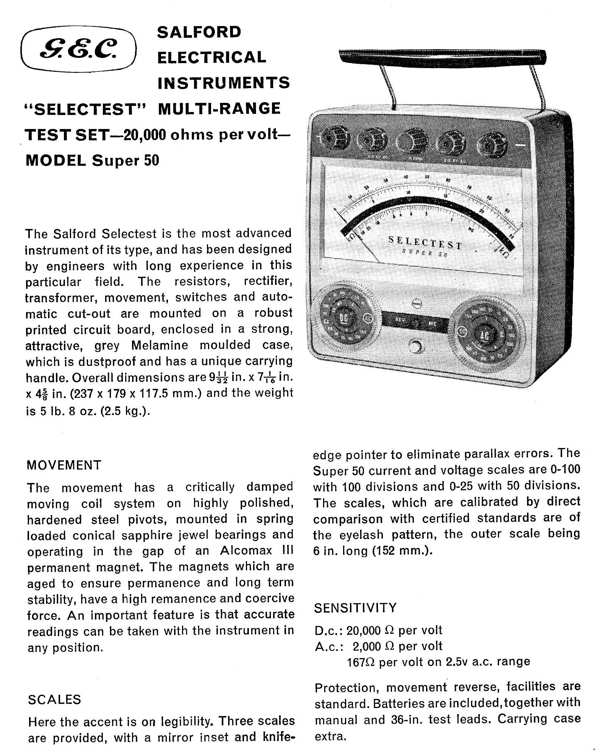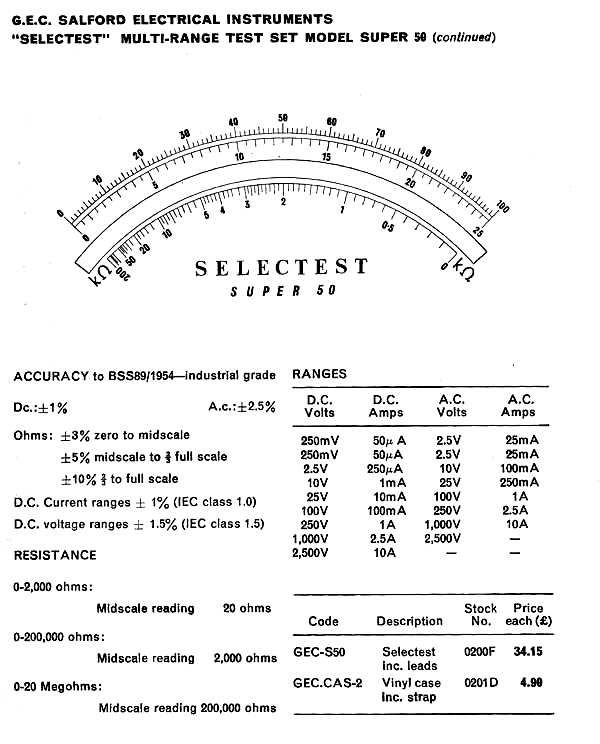Selectest Multimeter
Super 50 Mk2
serial no. 8428 MRF
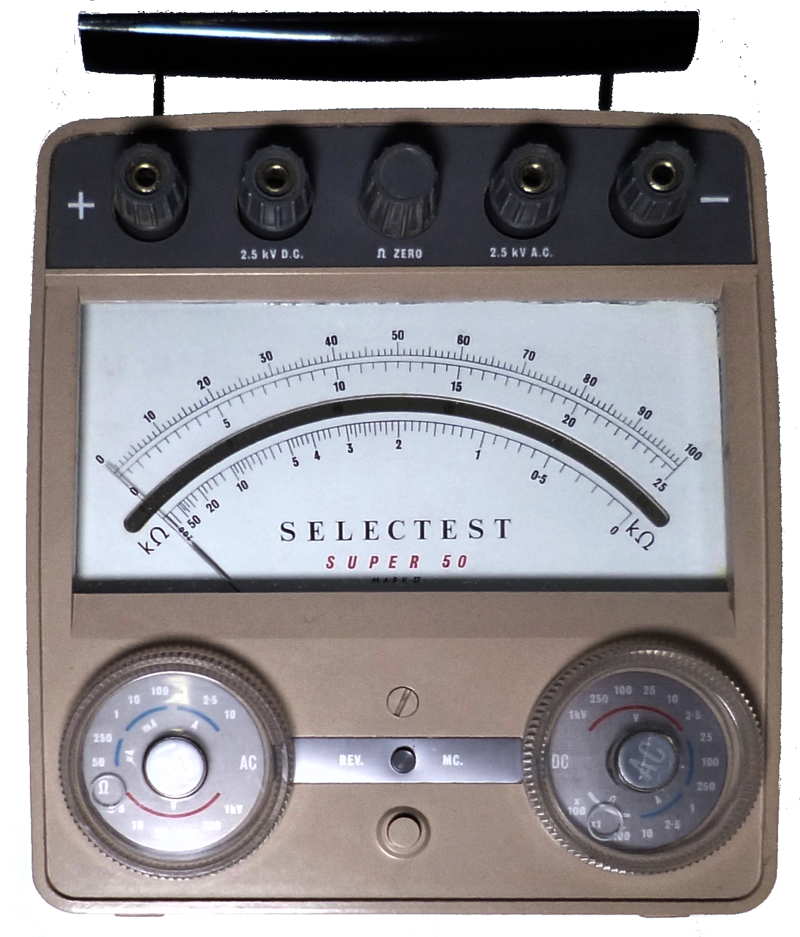
Selectest Super 50 mk2 multi
range
test set was one of the electronics engineer's favourite
multimeters, it is on a par with the much more popular Avometer model 8
which is almost exactly the same size. The scale on this instrument
lacks the dB scale of the Avometer but is somewhat larger. In 1972 it
had a list price of £34.15 just a few pence less than the
Avometer model 8 Mk4 or the model 9.
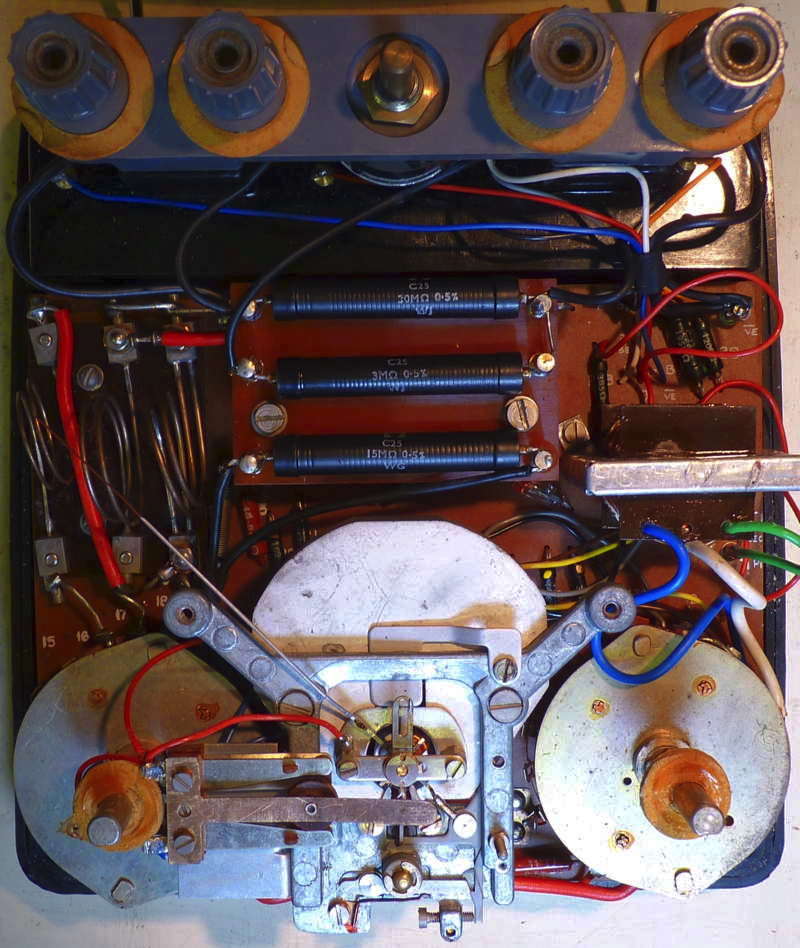
interior with scale plate removed
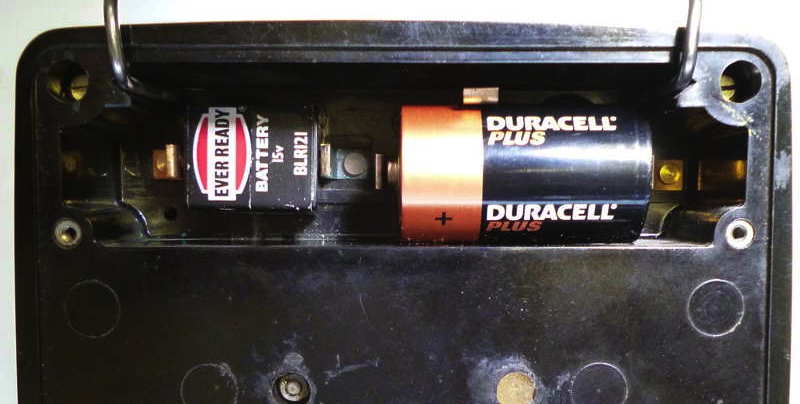
The meter uses the same type of batteries as the ubiquitous
Avometer model 8
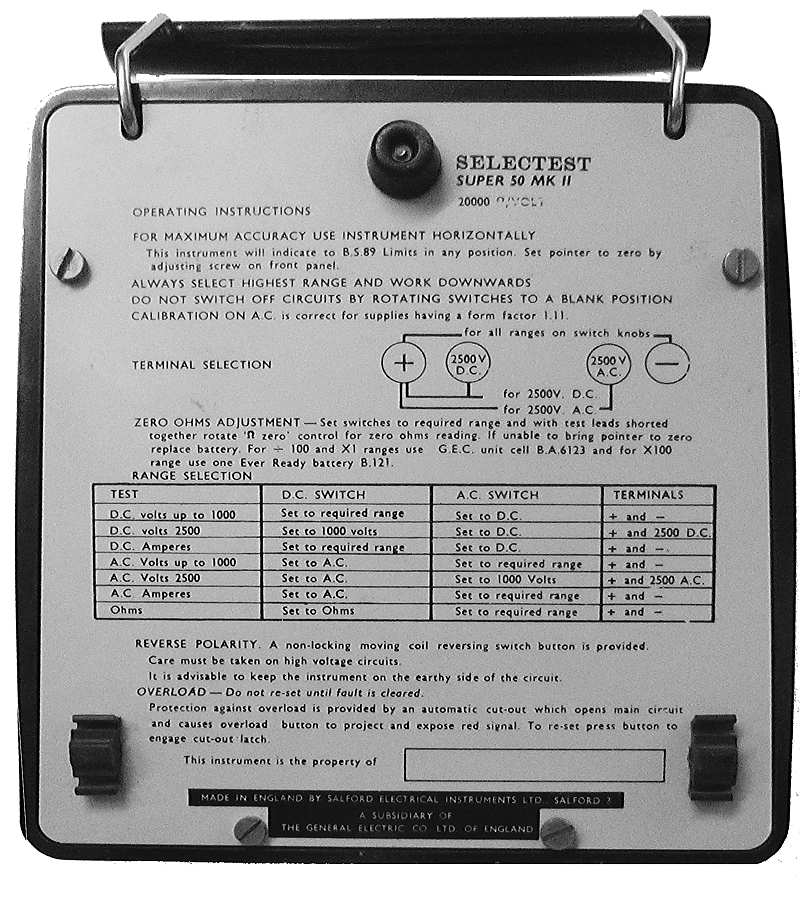
The instruction plate is held in position with four screws and hides the battery compartment.
I was given this test meter by Bernard
Griffin in 2016 who told me that it came from a school physics lab but
had been condemned on the grounds of health and safety. Surely it would
be perfectly safe for kids on LV experiments? When received it was in
need of a clean and the
glass was loose and I also noticed that the terminals seemed to be
insecurely fixed. The meter was working but I noticed that the 10 volt
DC range was inaccurate and indicated a higher voltage than it should
despite reading correctly on the current ranges. Removal of the
instruction plate revealed the battery
compartment and a corroded battery contact. The meter front cover is
held in place by four very long screws at the corners of the back
panel. The two range selector knobs and the ohms
adjuster need be pulled off before the front casing can be removed. Be
careful not to lose the cutout and reverse moving coil buttons.
Once the meter was apart I found that the
moulded bridge on which the terminals and adjuster potentiometer was
held in place by two clip washers in the battery compartment, these
appeared to have lost their grip so I resorted to a couple of drops of
super glue at the points where the bridge met the rear
casing. The glass was removed, cleaned and glued back in place and the
meter scale gently cleaned.
I measured the resistance between the +
and - terminals and found that the resistance was as expected on the 50
µA and 2.5V ranges but was 177kΩ rather than the expected 200kΩ on the
10V range. This meant that further disassembly would be needed as the
meter would have to be removed to get access to the printed circuit
board. Both are held in place by four screwed hexagonal pillars on the
underside which can be undone using a slotted screwdriver after
removing the protective wax insulation. The meter movement can then be
disconnected and removed from the board by unscrewing two of the
pillars. The resistors are clearly marked with their values and I soon
found that the one marked as being 150kΩ was in fact 127kΩ I
replaced this with a slightly high 150KΩ 5% in parallel with one
of 4.7MΩ. The arrow on the picture below indicates the position
of the replacements. After this modification I measured the the current
required to give full scale deflection on the 50 microamp range and
found it to be reading 97.5% low and similarly across the scale.
I adjusted the magnetic shunt (arrowed in the picture below) to adjust
for full scale.
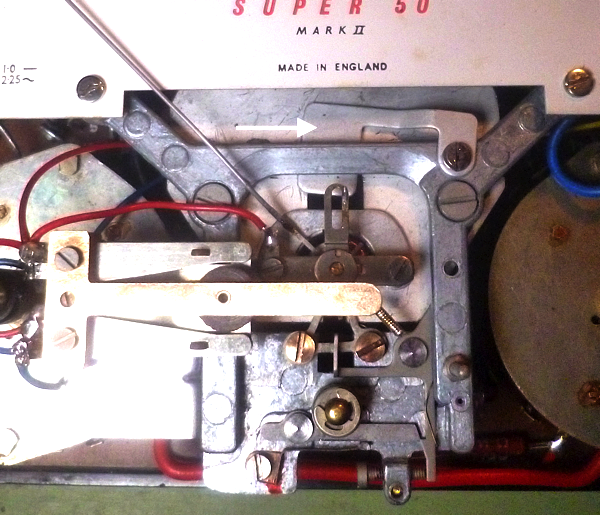
I am indebted to Roger
Walker who kindly sent me a copy of the instruction manual.
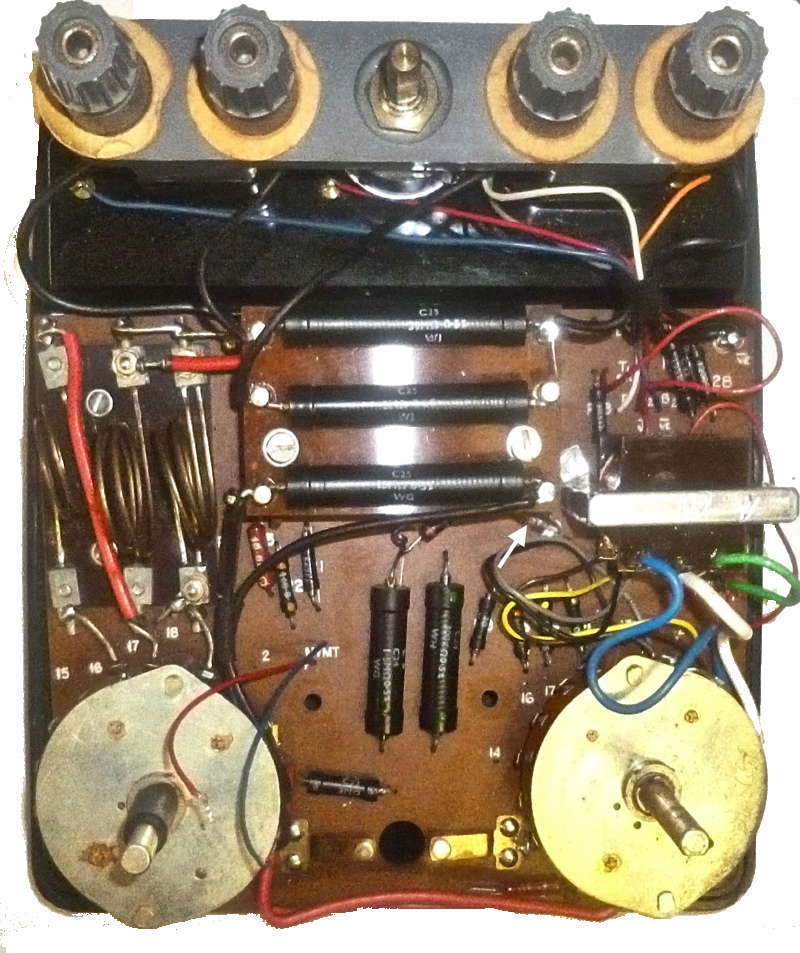
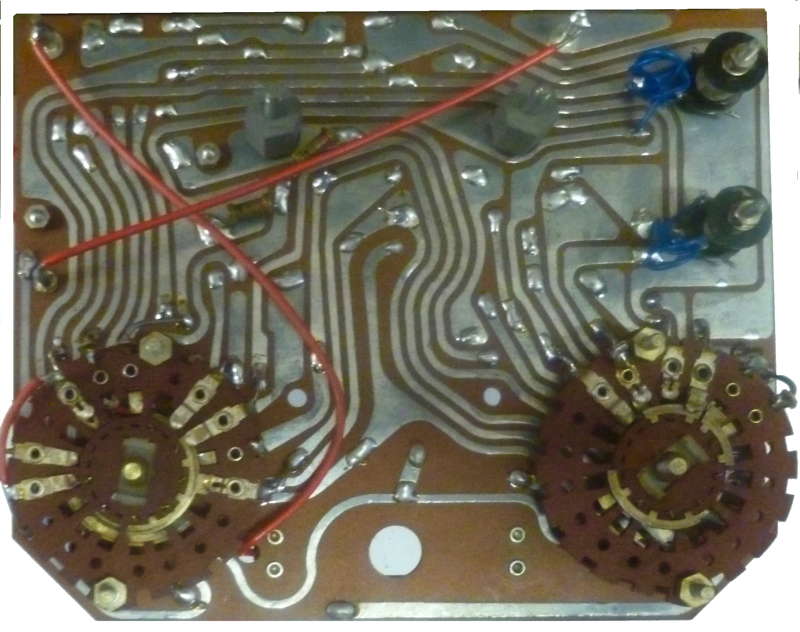
View with meter movement removed and underside of circuit board
The following taken from a 1972/3 catalogue gives a good indication of the capabilities and specification of the instrument.
